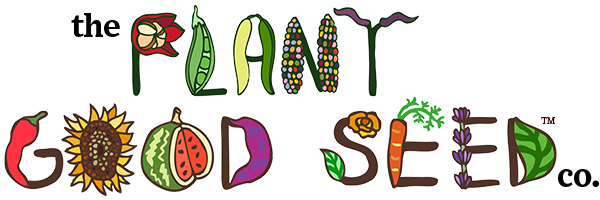
Dragon's Tongue - also called Dragon Langerie, Merveille de Piemonte, and Meraviglia del Piemonte - is a Dutch heirloom snap bean (Phaseolus vulgaris) strain that has prodigious yields of white, flattened pods that with purple streaks. The pods have a sweet succulence that make this the perfect bean for eating right off the plant, although we also chop and stir fry them (note: these will turn green when cooked). If the pods are allowed to fully mature they can also be used as a shelling bean. Plants have a bush-like habit and don't require trellising.
Seeds are certified organic.
Dragon's Tongue - also called Dragon Langerie, Merveille de Piemonte, and Meraviglia del Piemonte - is a Dutch heirloom snap bean (Phaseolus vulgaris) strain that has prodigious yields of white, flattened pods that with purple streaks. The pods have a sweet succulence that make this the perfect bean for eating right off the plant, although we also chop and stir fry them (note: these will turn green when cooked). If the pods are allowed to fully mature they can also be used as a shelling bean. Plants have a bush-like habit and don't require trellising.
Seeds are certified organic.
Beans are one of my favorite crops to grow because they can do fairly well with minimal maintenance even in lower-nutrient soils. Their nitrogen fixing root nodules help amend your soil with nitrogen, and they’re probably one of the most protein-dense foods you can grow with low inputs. Additionally, growing your own beans opens you up to a world of beauty and flavor not readily available in the bean aisle of the supermarket.
Beans should be planted in early summer, once all danger of frost has passed and the soil is consistently warm even over night. I have seen people start beans in containers, so this is possible as well if necessary.
Although you don’t need to soak beans before planting, I find it easier to do this step then to keep them adequately moist to germinate once in ground. Different beans require different optimal soaking time, but it’ll likely range between 24-72 hours. Carol Deppe describes this process with nuance in The Resilient Gardener, but the basic gist is that you want to keep an eye on the soaking beans - change out the water at least once a day rinsing the beans to make sure you don’t get undesirable bacterial growth. Observe the beans - they will be ideally ready to plant when you can see the root tip (the radicle) about to emerge from beneath the now more translucent seed coat. Any bad seed will float to the top and you can eliminate it. This process not only speeds up germination but also lets you in on a part of the seed development that usually happens invisibly underground.
Even though it is interesting and kind of fun, many people eschew the soaking process and plant dry beans directly into the ground which also works well although may require a bit more patience until germination. Regardless of your choice, plant beans out at a depth of ½”-1” (the larger the bean the deeper it should go). Be gentle so you don’t damage the emerging radicals if you did pre-soak.
For climbing beans, think about your trellising system before planting. Beans twine themselves around things (like poles) instead of using tendrils to climb.
Different varieties will perform differently from place to place, and I’ve had most harvest success growing varieties from self-selected homegrown seeds. Due to this, I generally expect lower yields the first time I grow a new bean variety, but I save seed from the plants that did best and see better yields in the following season.
You harvest beans for seed at the same time as you harvest them for shelling and dry storage - once the seed pod is brown and yellow, and totally dry and crispy to the touch. For extra good measure you can leave the beans out in the sun for an afternoon after harvest before shelling and storing.
-Goda
Collections: All Products Beans
We use cookies on our website to give you the very best shopping experience we can. By using this site, you agree to its use of cookies.
Emails every 4-6 weeks featuring compelling original gardening content, new variety announcements, sales, and event appearances.
